View all Ministers
View all Portfolios

Ensuring New Zealand benefits from sustainable tourism growth
- Hon Kelvin Davis
- Hon Eugenie Sage
The New Zealand-Aotearoa Government Tourism Strategy, which aims to deliver benefits to New Zealanders through productive, sustainable and inclusive tourism growth, has been launched today by Tourism Minister Kelvin Davis and Conservation Minister Eugenie Sage.
The new Strategy sets out a more deliberate and active role for government in tourism, to better manage the challenges of growth and share the benefits of tourism more widely.
“Tourism is a vital part of New Zealand’s ongoing success, supporting national and regional economies, creating jobs and allowing us to celebrate who we are. We must ensure that we’re set up to continue enjoying these benefits, while better managing the challenges that growth can bring,” Kelvin Davis said.
“The Tourism Strategy sets out five key outcomes for tourism in New Zealand to ultimately improve New Zealanders’ lives through tourism, and enrich our country through sustainable tourism growth.”
New Zealand’s natural environment, culture and historic heritage are an important focus for the Tourism Strategy.
“New Zealand’s natural and cultural heritage is at the core of our tourism industry and our national identity. We must build a sustainable visitor industry that protects and cherishes this heritage for future generations,” Eugenie Sage said.
“ As visitor numbers rise we must ensure the tourism industry is part of the solution for our biggest conservation challenges; including climate change, impact of pest species, and habitat loss and degradation.
“Tourism can be a champion for the restoration of the natural environment, and show other industries and sectors how it can be done successfully.”
The Tourism Strategy includes a work programme and priorities to focus the new direction for tourism and make sure it is a success. Tools such as the International Visitor Conservation and Tourism Levy, and the response to the Responsible Camping Working Group will help to make this a reality.
The ongoing success of the Tourism Strategy and tourism overall, will rely on strong industry leadership.
“We know that we’ll have better tourism outcomes by working closely with the tourism and conservation sectors, and building stronger partnerships with Māori tourism enterprise, iwi, hapū and tangata whenua. We look forward to working together with the industry to achieve our goals,” Kelvin Davis said.
More information on the New Zealand- Aotearoa Government Tourism Strategy can be found online at www.mbie.govt.nz/tourism-strategy .
Helpful tips
Here's a few useful links to help with planning your trip to Aotearoa New Zealand.
- Best things to do in the North Island
- Best things to do in the South Island
- Other Islands
- Best ways to travel around
- Calculate travel times and distances
If You Seek
Across our incredible country, you can find everything from untamed wilderness to rich culture. There's more to find in Aotearoa New Zealand.

North Island destinations | South Island destinations | Explore all regions
Explore Aotearoa New Zealand all year round
Discover your best time to visit
Must-do New Zealand experiences
Explore more things to do in New Zealand >
Stargrazing in New Zealand

Kura Tawhiti, Castle Hill, Christchurch - Canterbury
By Brett Phibbs
The unique experience of enjoying New Zealand's stunning night skies while indulging in exceptional cuisine.
Find things to do
Start planning your new zealand holiday, travel advice and safety, visas and entry requirements long-arrow-right.
Learn more about the available visa options and entry requirements into New Zealand.
COVID-19 travel safety information long-arrow-right
Find out more about New Zealand's COVID-19 travel safety and information.
Flights to New Zealand long-arrow-right
Find more information on finding flights to New Zealand.
Travelling around New Zealand
Driving long-arrow-right.
Get familiar with driving in New Zealand.
Public transport long-arrow-right
Find out how to get around without hiring a vehicle.
Accommodation long-arrow-right
Explore different accommodation options.
Domestic flights long-arrow-right
Flights are easy to catch and are no longer than two hours.
- Share on Facebook
- Share by email

Contact details
New zealand tourism board.
Manaakitanga Aotearoa
Tourism New Zealand is the organisation responsible for marketing New Zealand to the world as a tourist destination.
- develop, implement and promote strategies for tourism
- give advice to the Government and the tourism industry.

Hon Matt Doocey
Minister for Tourism and Hospitality
René de Monchy
Chief Executive
Utility links and page information
Last updated 20 December 2023
Contact NZ government
- A-Z of government agencies
- Contact details by topic
About this website
- About Govt.nz
- Feedback about Govt.nz
- The scope of Govt.nz
Using this website
- Accessibility
- Terms of use
Date printed 06 September 2024
New Zealand to nearly triple tax on international tourists
Peak tourism body says hike will make South Pacific country ‘incredibly expensive’ to visit.

New Zealand has announced plans to nearly triple a tax on international tourists, prompting backlash from the country’s tourism industry.
New Zealand’s National Party-led coalition government said on Tuesday that it would raise the so-called International Visitor Conservation and Tourism Levy (IVL) from 35 New Zealand dollars ($22) to 100 New Zealand dollars ($62) from October 1.
Tourism Minister Matt Doocey said the hike would allow the country to grow its tourism industry while ensuring visitors contribute to “high-value conservation areas and projects, such as supporting biodiversity in national parks and other highly visited areas and improving visitor experiences on public conservation land.”
“A $100 IVL would generally make up less than 3 per cent of the total spending for an international visitor while in New Zealand, meaning it is unlikely to have a significant impact on visitor numbers,” Doocey said.
Tourism Industry Aotearoa, the peak body for New Zealand’s tourism sector, said the increase would make the country “incredibly expensive” to visit.
The peak body said the hike, along with a recent 60 percent increase in visitor visa fees, would bring the cost of visiting New Zealand to as much as 500 New Zealand dollars ($310) per person, more than double the cost of visiting Canada and two-thirds more than visiting Australia.
“New Zealand’s tourism recovery is falling behind the rest of the world, and this will further dent our global competitiveness. Airline connectivity isn’t nice to have for a country at the bottom of the world – it’s essential,” TIA Chief Executive Rebecca Ingram said in a statement.
The International Air Transport Association also expressed disappointment, describing the hike as a “double whammy” for the sector.
“These changes make travel to New Zealand more expensive and less attractive and could further delay the recovery in visitor numbers to beyond 2026,” Xie Xingquan, IATA’s Regional Vice President for North Asia and Asia-Pacific, said in a statement.
New Zealand’s previous Labour Party government introduced the levy in July 2019, saying it would help fund infrastructure and ease the strain on services and the natural environment.
Tourism was brought to a screeching halt several months later when the arrival of COVID-19 prompted the government to close the international borders .
While the sector has recovered from the worst of the pandemic fallout, visitors are still only at about 80 percent of pre-COVID levels.
Tourism last year contributed about 13.2 billion dollars ($8.2bn) to New Zealand’s economy, accounting for 3.5 percent of gross domestic, making it one of the country’s biggest export industries.
We've detected unusual activity from your computer network
To continue, please click the box below to let us know you're not a robot.
Why did this happen?
Please make sure your browser supports JavaScript and cookies and that you are not blocking them from loading. For more information you can review our Terms of Service and Cookie Policy .
For inquiries related to this message please contact our support team and provide the reference ID below.
New Zealand Tourism
Sustainability commitment, he kupu taurangi kia toitū ai te tāpoitanga.

Leading the world in sustainable tourism
The New Zealand Tourism Sustainability Commitment aims to see every New Zealand tourism business committed to sustainability by 2025.
Our vision is Leading the World in Sustainable Tourism - Toitū te taiao, toitū te tāpoi. E kōkiri ana e Aotearoa. To deliver on this, we must grow an industry which delivers high quality experiences for both domestic and international visitors while having a positive impact on local communities, contributing to the restoration and protection of our natural environment, and rebuilding the economic sustainability of the sector.
The TSC was developed by Tourism Industry Aotearoa, the voice of New Zealand's tourism industry. We are inviting every New Zealand tourism business to join us on this sustainability journey. Sign up now to the Tourism Sustainability Commitment and work towards twelve Commitments across the four elements of tourism sustainability: Economic, Visitor, Community and Environment.
In 2021 the Carbon Challenge was launched and reducing the carbon impact of the visitor sector is a key focus.
Together we can create a truly sustainable tourism industry that makes a positive and enduring contribution to Aotearoa New Zealand.
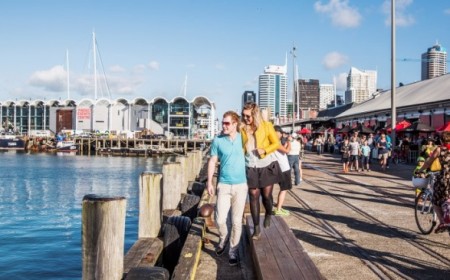
The Twelve Commitments
The New Zealand Tourism Sustainability Commitment consists of a set of 12 Commitments for individual businesses to work towards.
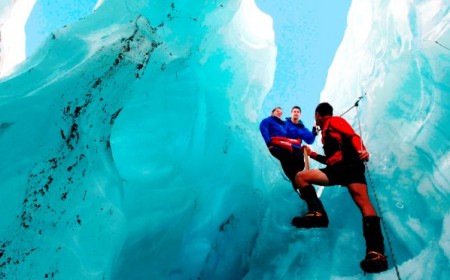
What, Who, Why, When
What is the TSC, Who developed it (and who it's aimed at), Why it's important, and a timeline of its evolution.
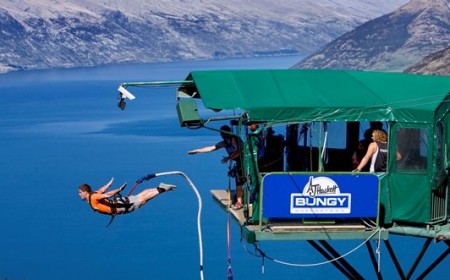
Take Action
Guides, resources and tools to help you start your sustainability journey and make progress against each Commitment.
New Zealand's tourism tax will nearly triple in October

Entering New Zealand is about to get more expensive. Starting next month, the country is set to nearly triple its tourism tax amid surging tourism, the government announced Tuesday.
Beginning Oct. 1, tourists entering New Zealand from most countries, including the U.S., will have to pay a hiked International Visitor Conservation and Tourism Levy of 100 New Zealand dollars (about $62). That's up from the current fee of NZ$35 (about $22).
The move has been somewhat expected for years; back in early 2022, TPG reported that New Zealand's tourism and hospitality minister had hinted at potential tourism tax hikes right as travelers began returning to the country in the wake of the relaxation of stringent COVID-19 pandemic travel restrictions.
Related: How I used 75,000 Chase points to fly business class to New Zealand
Surging tourism in New Zealand
New Zealand introduced its tourism tax about five years ago as a way to offset the mounting pressure on infrastructure and natural resources posed by a surging number of tourists visiting the country from all over the world.
After a pandemic hiatus, travel to New Zealand has continued to spike in recent years.
In 2024, the total number of seats on commercial flights between the U.S. and New Zealand is up 7% since 2019, according to data from aviation analytics firm Cirium. Seats are up a whopping 61% versus a decade ago, in 2014.
That increase in seats has been sparked by new and more frequent flights to the country. In addition to more routes to Auckland, additional options to other parts of the country are now available, including to Christchurch on New Zealand's South Island via United Airlines.
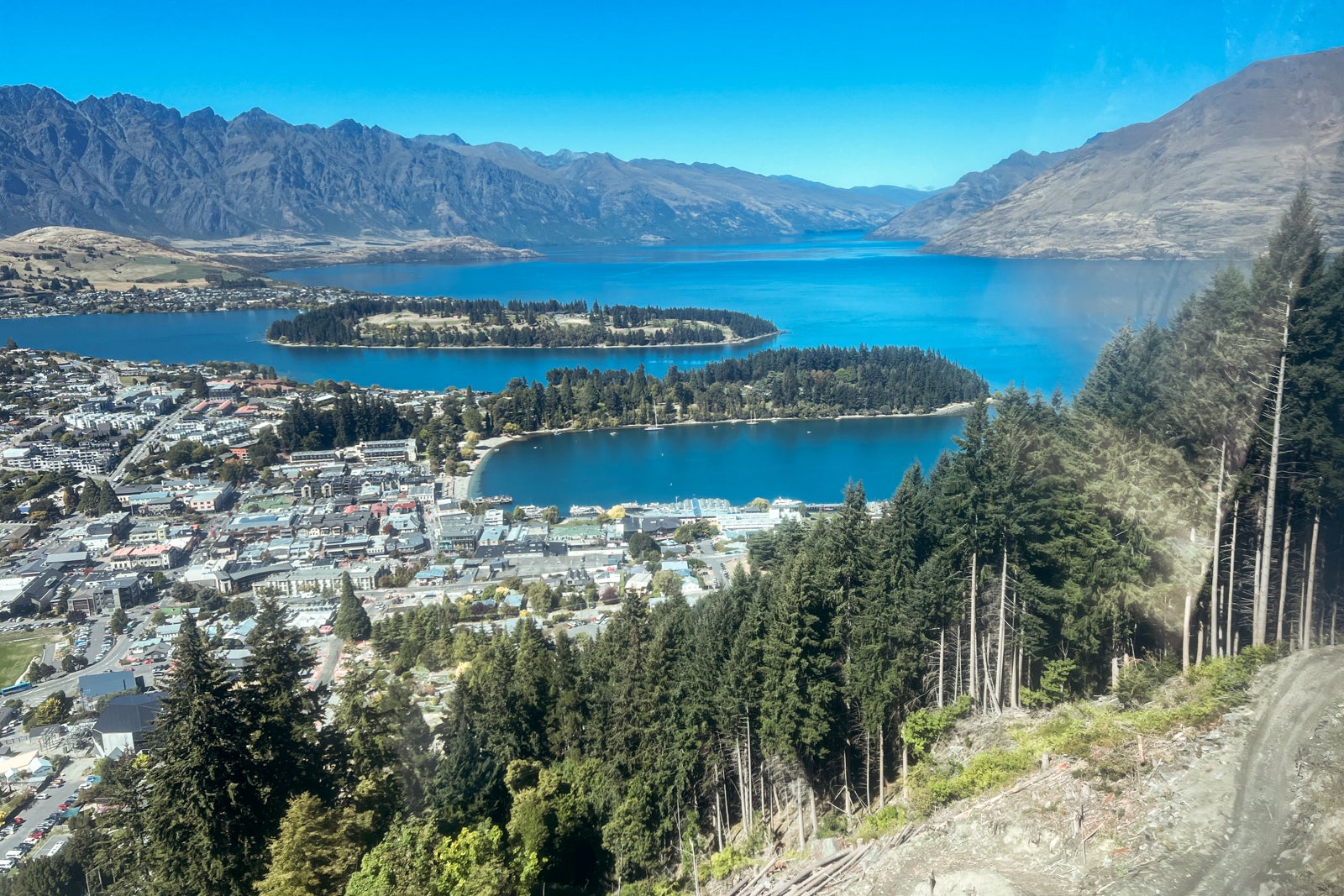
Related: Which major destinations charge a tourist tax (or are planning to soon)?
Why is New Zealand raising its tourism tax?
Raising the tourism tax to NZ$100 is meant "to ensure visitors contribute to public services and high-quality experiences while visiting New Zealand," the country's minister for tourism and hospitality and minister for conservation said in a statement announcing the news Tuesday.
"The Government is serious about enabling the tourism sector to grow," Matt Doocey, the country's tourism and hospitality minister, said Tuesday. "But international tourism also comes with costs to local communities, including additional pressure on regional infrastructure and higher upkeep and maintenance costs."
Not everyone is in favor of the hiked tourism tax, though.
An independent trade group for the country's tourism sector said it was "very disappointed" in a statement Tuesday.
The fee "is a barrier making New Zealand incredibly expensive to visit," said Rebecca Ingram, chief executive at Tourism Industry Aotearoa.
How to pay New Zealand's IVL
Travelers visiting New Zealand are asked to pay the International Visitor Conservation and Tourism Levy when applying for a visa or requesting a New Zealand Electronic Travel Authority as part of standard preentry procedures.
Citizens and permanent residents of New Zealand and Australia are exempt, as are connecting passengers at Auckland Airport (AKL) headed to a final destination in other countries and residents of numerous other Pacific island nations.

Bottom line
New Zealand is far from the only country to add or hike tourism taxes or make similar charges in recent years. Long-planned fees for day visitors on certain high-demand weekends were implemented in Venice, Italy, in 2024. And in Ecuador, visitors to Galapagos National Park recently saw entry fees double.
Related reading:
- Key travel tips you need to know — whether you're a first-time or frequent traveler
- Best travel credit cards
- Where to go in 2024: The 16 best places to travel
- 6 real-life strategies you can use when your flight is canceled or delayed
- 8 of the best credit cards for general travel purchases
- 13 must-have items the TPG team can't travel without
Tourism impact
Themes and opportunities to how visitors contribute to new zealand..
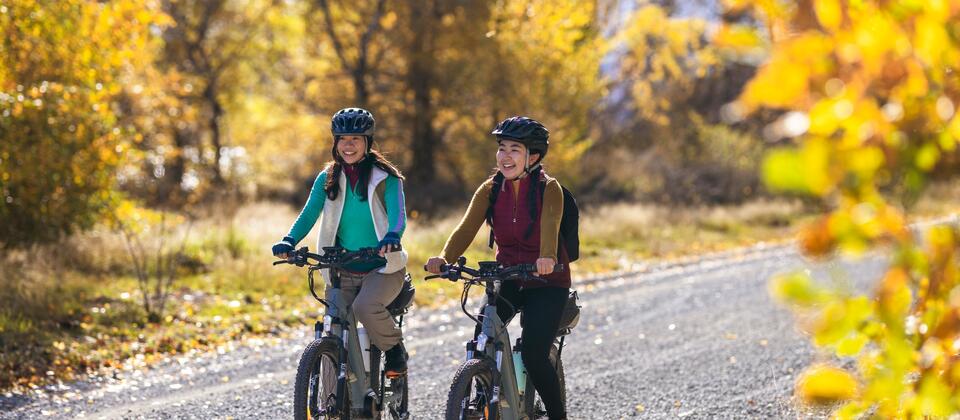
Lake Tekapo/Takapō, Christchurch - Canterbury
By Miles Holden
Tourism sector's contribution to New Zealand
Before COVID-19, tourism was New Zealand's largest export industry and delivered $40.9 billion to the country. Tourism made a significant positive impact on regional economies supporting employment by directly employing 8.4 percent (229,566 people) of the New Zealand workforce.
For the year ended March 2023:
- Tourism was New Zealand second largest export earner
- Total tourism expenditure was 37.7 billion, an increase of 39.6 percent ($10.7 billion) from the previous year
- International tourism expenditure increased 456.9 percent ($8.9 billion) to $10.8 billion and contributed 11.4% to New Zealand’s total exports of goods and services
- GST generated from international tourists totalled $1 billion, an increase of $858 million
- Overseas visitor arrivals to New Zealand increased 858.7 percent to 2,199,073
- Tourism generated a direct contribution to GDP of $13.3 billion, or 3.7 percent of GDP, an increase of 30.9 percent ($3.1 billion)
- The indirect value added of industries supporting tourism generated an additional $8.8 billion, or 2.5 percent of GDP
- 189,432 people were directly employed in tourism, 6.7 percent of the total number of people employed in New Zealand.
- In total, 317,514 people were directly or indirectly employed in tourism, or one in 9 New Zealanders.
How visitors contribute to New Zealand's wellbeing
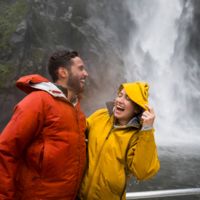
Te Ōhanga (opens in new window)
Understanding how visitors to New Zealand contribute to New Zealanders wellbeing, including the visitor economy, spending power, carbon footprint and more.
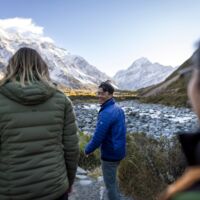
Views on Tourism
Views on Tourism research is conducted quarterly to understand how New Zealanders view tourism.
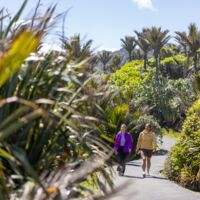
The role of sustainability in destination and operator choice (opens in new window)
Tourism New Zealand and the Ministry of Business Innovation and Employment undertook research to better understand visitor perceptions of sustainability in relation to holiday destination and operator choice.
Discover more
Let us show you the best of New Zealand on other platforms by selecting 'On' and allowing us to share data from your visit(s) with our partners.
Our Privacy Policy and Cookie Policy explain how we use your data and who our partners are.
Your current setting:
In addition to above, we use other cookies and analytics to provide a better site experience. To view cookie details and how to opt-out, please see our Cookie Policy
We use cookies to provide you with a better experience on this site. Keep browsing if you're happy with this.
We also use cookies to show you the best of New Zealand on other platforms. See our Privacy Policy and Cookie Policy to understand how you can manage cookies.
Re-evaluating New Zealand tourism–what the future holds
Journal of Tourism Futures
ISSN : 2055-5911
Article publication date: 15 February 2022
Issue publication date: 10 August 2022
COVID-19 plunged tourism off the cliff in New Zealand. What did this mean for the country, how did we respond and what is the future?
Design/methodology/approach
This is a personal account, reflecting on my thoughts and experiences as Chief Executive of Tourism Industry Aotearoa.
It is a challenging time to try to predict the future given all the remaining COVID-19-related uncertainties. But there are a number of consistencies that will frame the revival of tourism in New Zealand, when international visitors do return. Government, industry and the community will all look to shape the future of tourism, and it is essential we take a balanced score card approach, building back better with a focus on value. However, we must never forget the customer, who may well have the biggest influence.
Research limitations/implications
No specific research was completed for this article–it relies on the author's industry experience.
Originality/value
We can only have a successful tourism future in Aotearoa if we deliver a broad range of quality products and services that enable us to meet the promise of an economically, socially, culturally and environmentally sustainable destination. The author’s message is to focus on providing customer value in order to achieve that future. It is simple as that.
- Future of tourism
- New Zealand
Roberts, C. (2022), "Re-evaluating New Zealand tourism–what the future holds", Journal of Tourism Futures , Vol. 8 No. 2, pp. 151-154. https://doi.org/10.1108/JTF-01-2022-0026
Emerald Publishing Limited
Copyright © 2022, Chris Roberts
Published in Journal of Tourism Futures . Published by Emerald Publishing Limited. This article is published under the Creative Commons Attribution (CC BY 4.0) licence. Anyone may reproduce, distribute, translate and create derivative works of this article (for both commercial and non-commercial purposes), subject to full attribution to the original publication and authors. The full terms of this licence may be seen at http://creativecommons.org/licences/by/4.0/legalcode .
Can we really predict the future?
It was rather daunting to be asked by a renowned tourism futurist to write an article on the future of tourism for an academic journal! Thank you to Dr Ian Yeoman for the opportunity. This article is drawn from my experiences leading New Zealand's peak tourism industry body since 2014. It is not particularly academic in form or content but hopefully my views from an industry perspective are of value to readers.
It is of course not possible to contemplate the future for tourism in Aotearoa New Zealand or anywhere else on our planet (or even off-planet given recent exploits by some mega-billionaires and their space toys) without reflecting on the impact of COVID-19.
We had of course previously considered the potential impact of a pandemic on the global movement of people. But our points of reference included the SARs epidemic, Ebola and the Asian Flu. Devastating for those inflicted but regional and/or relatively short-lived. Speed bumps on the relentlessly upward path for tourism. COVID is very different–rather than a bump in the road, we have plunged off a cliff and despite valiant efforts to climb back up, we keep sliding back down again.
As many scientists like to say when they are wanting to communicate in layperson terms, “this is a tricky virus”. We have all become more familiar with the Greek alphabet. Alpha to start with of course, then later Delta and then Omicron, and who knows what is still to come. I certainly do not. For the purposes of this article, all I can do is presume that somewhere in the not too distant future, the COVID pandemic becomes endemic and as a species we have learned to live with it. And the world is operating to a “new normal”, including how we “do” tourism.
NZ's response
In 2020, six months into the pandemic, New Zealand put together a Tourism Futures Taskforce of government and industry leaders. It was tasked with identifying meaningful actions that could make for a better and more sustainable tourism future. The Taskforce produced an interim report ( MBIE, 2021 ) with some interesting and challenging ideas. However, a change of Tourism Minister saw a different approach wanted and in 2022 work is beginning on a Tourism Industry Transformation Plan ( MBIE, 2022 ), which has a workforce orientation. There is plenty of talk about “what sort of tourism do we want?” but little or no action so far. Strikingly, what the customer wants is being largely overlooked in these discussions.
It is commonly presumed that the New Zealand tourism product is so compelling that attracting visitors back is not an issue. The focus is instead on managing visitor numbers, protecting the environment, hearing the community voice, addressing social licence concerns, fixing infrastructure deficits and identifying new funding models, new taxes, all important and necessary conversations.
A balanced score card
We certainly need a balanced scorecard approach. But too often the visitor–the customer–is taken for granted. Or even somewhat demonised–the part of the tourism system we obviously need, but somehow would prefer to do without. Just send us your money and you can stay home!
The key question is–who will have the greatest influence over the future of tourism in Aotearoa? Is it the operator, determining what product and service they want to deliver, where and when and how?
Is it the Government, determining the boundaries of behaviour and types of permitted and/or encouraged activity, ways of doing things and the taxation contribution? Government acts as both a steward, making sure the tourism system is operating to some pre-determined goals and that all the participants have the right incentives, information, and capability to play their respective roles; and Government as an actor in the tourism system, directly through its investments and interventions–such as infrastructure provision and funding a national tourism organisation to address market failure.
Is it the community, determining what sort of visitor activity it wants happening in its backyard, and how it wants to protect its environment and community values? And is this the community represented by local government representatives, or a more localised, genuine community voice?
Or is it the visitor? Different visitors with different motivations to travel, and with different expectations of what experience they will have and the services and products they wish to consume.
Building back better
New Zealand is not alone in having a public discussion about “building back better”, about “re-imagining tourism”, “reshaping the future”. The same conversations are happening worldwide.
But is the recovery largely going to happen to us, regardless? There will of course be some significant supply side influences–two of the most important being when and under what conditions governments open their borders; and when and how airlines will provide services. But could not the biggest single factor, by some considerable distance, be the desire of people to travel again, and where those desires take them?
Each traveller will make a personal decision about where they go and when. It might be a business decision, or desire to connect with friends and family, or to attend an event. If a leisure trip, they will consider the usual factors when deciding where to go on holiday, with an enhanced layer of safety and risk management, and for a small but growing segment, the carbon footprint of that trip.
There is only so much any destination can do to manage this return of tourism once it opens its borders. Open sky agreements mean pretty much any airline can fly to a country like New Zealand, once they have secured a landing slot at an airport and met a few other requirements. They can then sell tickets on those planes to anyone they want. And as long as those ticket buyers meet New Zealand's entry requirements, they are free to come.
The Government, largely though its national tourism organisation, can try to target its marketing messaging at certain types of visitors considered “more desirable”–but this will likely only have an impact on the fringes. The customer will make their choice, based on a whole range of factors unique to each of them, and marketing may or may not be one of those factors.
They will come back
So, visitor will return, in all shapes and sizes–and the market will respond to those visitors and provide the services and products they desire. Despite our idealist thinking, our ambition to build a more sustainable tourism future, these positions could be overwhelmed by the major drivers: demand, plus affordable and convenient travel options–that will deliver visitation in an organic way.
The customer has the greatest influence–and I expect we will find that we have much less control over what happens, than we currently think we will.
So, New Zealand tourism will at some point re-join a highly competitive international market. There will again be so many choices, for kiwis and all other travellers. New Zealand is a premium destination at the bottom of the globe. It is not cheap to get here for most people, and it is not cheap to be a visitor here and enjoy our world-class attractions and activities.
It is universally agreed–and has been for decades–that we should target “high value visitors” and we have been successful to a degree. When we emerge from the pandemic, the focus will still be on value before volume–acknowledging that volume growth is still important, especially when starting again from zero!
But when talking of value, there is an essential point to be made.
Let us stop obsessing on the “Value visitor”–and rather focus on how we deliver value to the visitor.
The only way to ensure the long-term economic sustainability of a tourism enterprise, and of a tourism destination, is maintaining a consistently high consumer perception of the value they have been delivered.
Let us alter our language. Let us talk about attracting high quality visitors and delivering value experiences to those visitors.
Focussing on high value visitors also implies that some visitors are low value. This does not fit well with New Zealand's cultural ethos of equity and fairness. It goes against the Māori concept of manaakitanga–making all visitors welcome if they come with the right intentions. Arrive as strangers, leave as whanau (family).
But if we think about a quality visitor, not a value visitor, the quality visitor can be a freedom camping German backpacker, who will spend his lifetime returning again and again to New Zealand; the billionaire American, who after a brief stay in a luxury lodge invests millions into a local business opportunity; or the family of five from Timaru who use the school holidays to explore a new region of the country every year.
As an industry, the future should be about delivering great value to high quality visitors who want authentic connections–be they domestic or international, rich or poor, old or young.
If we deliver a broad range of quality products and services–and every operator strives to meet or exceed the expectations of every visitor–then New Zealand will also meet all of our social tourism goals. We can have the world's most sustainable tourism industry. That is not only a good thing to do. It is an essential thing to do, and it will enhance our country brand and ensure that we are delivering the right outcomes for New Zealand and for our visitors.
MBIE ( 2021 ), New Zealand Futures Taskforce Interim Report , available at: https://www.mbie.govt.nz/immigration-and-tourism/tourism/tourism-recovery/tourism-futures-taskforce/tourism-futures-taskforce-interim-report/ .
MBIE ( 2022 ), Tourism Industry Transformation Plan , available at: https://www.mbie.govt.nz/immigration-and-tourism/tourism/tourism-recovery/tourism-communities-support-recovery-and-re-set-plan/tourism-industry-transformation-plan/ .
Corresponding author
About the author.
Chris Roberts–Chief Executive Tourism Industry Aotearoa. Chris has been the chief executive of New Zealand's peak tourism industry body, Tourism Industry Aotearoa, since 2014. His career includes journalism, working at Parliament and numerous corporate roles. Along with his CEO's responsibilities, Chris has a number of governance roles, including chairing the Tourism Management Advisory Group for Victoria University of Wellington.
Related articles
All feedback is valuable.
Please share your general feedback
Report an issue or find answers to frequently asked questions
Contact Customer Support
9 things only New Zealand locals know

Aug 16, 2024 • 9 min read

Pack with a view to changeable conditions as the weather on this island nation can be unpredictable. Getty Images
While I was born and bred here in New Zealand – or Aotearoa, the country's Māori-language name – I’ve spent enough years away to understand how it’s a destination that can feel both comfortingly familiar and completely strange to visitors all at once.
The butter is bright, beta-carotene yellow. Pies are filled with meat. You usually go up to the counter to pay for your meal. And you never, ever, sit on a table – it’s a taboo that has spread from Māori to the wider population.
But this diverse country of boiling mud pools, soaring mountains, subtropical beaches, rainforests and friendly people will make you feel – well, "sweet-as" (yes, that means good). Here are some things to know before going to New Zealand.
1. New Zealand’s weather may be relatively mild – but it also has the potential to be wild
An archipelago in the Pacific , New Zealand is a long, skinny country moored in tempestuous oceans heavily influenced by Antarctica . Its landmass stretches between 34 and 47 degrees south – the rough equivalent of northern Morocco to southern France – and the climate is often compared to Britain . What does this all mean? The weather can turn bad quickly. It pays to pack for all seasons, with a hat and sunscreen being must-haves. New Zealand’s peak UV levels can be 40% higher than those in similar North American latitudes, thanks in part to its clean air. For some, a blistering burn can happen in minutes and will ruin your holiday for a good week or more. In summer, plan shadier activities (such as visiting galleries and museums) for the peak hours of the day.

2. It’s OK to dress down
Casualness rules in New Zealand, even in urban areas. Depending on what region you’re in, even a wedding might see some Kiwis in jeans, their cleanest "bush shirt" (a tough woolen shirt) and gumboots (rubber boots/ Wellington boots) or jandals (flip-flops). This is unremarkable.
Something particularly disconcerting to travelers is New Zealanders’ penchant for bare feet. When you’re out of the main cities you’ll see tough-soled Kiwis hot-stepping over bubbling tarmac and strolling through the supermarket unshod.
Feel free to pack casual clothes.
3. What do you mean, there’s no bus?
Unbelievably, New Zealand’s public transport was arguably far better in the mid-20th century. But with many tram and railways ripped up for the sake of roads, the country has become very car-dependent.
With a population of only 5.2 million living on a landmass the size of Italy, car culture is proving difficult to shake. While cycling and public transport are making strong incursions, outside of Auckland there is nowhere near the density, quality, affordability and regularity of public transport you may be used to at home. Many New Zealand towns do not even have Uber or other rideshare apps.
With that being said, the country is reasonably well set up for visitors. For example, there are regular shuttle services to popular tourist destinations, such as Hobbiton and Waitomo Caves – but it pays to plan your transport well ahead.

4. Biculturalism is at the heart of Aotearoa’s culture
Unlike many colonized nations, in 1840 the British Crown signed a founding treaty, the Treaty of Waitangi with indigenous Māori, who have lived in New Zealand since at least the 1300s. Although colonization’s effect on Māori continues to spark debate and protest, the result is that modern New Zealand is a strongly bicultural nation.
Te ao Māori (the Māori worldview) is an integral part of even everyday interactions. This is evident to visitors and there are countless Māori-led tours, eateries and experiences to learn more.
To show respect, ask about local iwi (tribe) customs. As an example, don’t stand on the summit of maunga (mountains) including Ngāuruhoe (Mt Doom in the Lord of the Rings films) or Taranaki , if you go for a hike. As the head of an ancestor, mountain tops are regarded as tapu (sacred). New Zealand’s most famous son, Sir Edmund Hillary, may have said “we knocked the bastard off” when he and Tenzing Norgay climbed Everest in 1953, but modern travelers don’t have to.
Many place names and road signs are also in te reo Māori (the Māori language) . When it comes to speaking it, Kiwis will appreciate visitors trying to pronounce words as accurately as possible ("wh," for example, is generally pronounced "f"). An online pronunciation guide or podcast will help you with some of the more unfamiliar sounds; try Everyday Māori for starters.

5. If you want to make local friends, ask about our birds
New Zealanders absolutely love talking about their native birds and will immediately consider you a "good sort" (a kind and likable person) if you show interest.
But prepare to settle in. From tūī, kererū (wood pigeons), pīwakawaka (fantails) or whio (blue ducks), everyone has their favorite. Conservation organization Forest and Bird even runs a hotly contested Bird of the Year competition, which got global attention in 2023 when John Oliver, host of Last Week Tonight , campaigned on behalf of the pūteketeke (the Australasian crested grebe).
We love our birds because we understand how precious they are. Many are endangered, some critically so. New Zealand was a paradise of birds before people arrived around the 1300s, bringing with them rats, pigs, dogs, stoats, mice, cats, rabbits, weasels and possums. These have wreaked havoc and sent biodiversity plummeting ; in the last 1,000 years, 40 indigenous species have become extinct. (Thank goodness early settlers did not introduce the mongoose to control the rabbit population, as was suggested in the 19th century.)
The country is currently in the first 10 years of its Predator Free 2050 strategy, which aims to eradicate as many introduced mammals as possible by 2050. It is hugely ambitious and has resulted in a massive groundswell of support as everyday Kiwis exercise their bloodlust, setting rat traps in the backyard.
As a traveler, you'll encounter many tourism operators doing the same. You can learn more about these efforts as you zipline across regenerating forests at Rotorua Canopy Tours or stay at Maruia River Retreat , which is in the process of converting to a fully electric resort powered by renewable sources. Projects are even popping up where tourists can help check traplines, such as Tongariro River Rafting's Blue Duck Experience .
Predator-free bird sanctuaries abound in many areas, including the Zealandia sanctuary in Wellington, a sprawling and peaceful city oasis where you may be lucky enough to see wild kiwi on a guided night tour.
6. ACC is a wonder – but not a replacement for travel insurance
One of the most humane things about New Zealand is its no-fault accident compensation scheme, ACC . Fall and break your leg skiing? Get a bit banged-up on a big night out? It doesn’t matter whose fault it is and that you’re a tourist; if it’s an accident, your medical care is free.
Of course, you’ll need to have your own travel insurance. There are a lot of things – such as travel delays or extra accommodation needs – that ACC won’t cover if you get injured.
7. New Zealand is generally safe, but…
New Zealand is a safe and welcoming country, but crime happens. For travelers, avoiding downtown clubbing areas after midnight is a good way to avoid most problems. Tourist vans can be a goldmine for thieves, and are targeted especially when parked at freedom camping sites.
Many travelers have had an unfortunate souvenir of their time in New Zealand: a local newspaper article about how they lost everything in a break-in, ruining their dream Kiwi holiday. If you need urgent help, the emergency number is 111.

8. Pies are savory, not sweet
Kiwis love international cuisine, and you should be able to find something vaguely familiar to eat, especially in the main centers. But you must try a few quintessential New Zealand treats, too. Other than the fun you’ll have browsing the supermarket and trying every block of Whittaker’s chocolate on the market, roadside eateries (called "tearooms") and cafes offer a range of classic snacks.
One of the most filling and affordable small meals is a savory pie, sold just about everywhere. They’re golden, crispy pastry cases with fillings like butter chicken, mince (beef) and cheese, and steak and mushroom. Hint: The best pies are made in the local bakery. To get a winner, choose pies sold in plain white paper bags (not branded plastic) and bite into it straight from the bag.
If you’re down south and spot cheese rolls on the menu, try them, too. Known as "Southland sushi," a magical alchemy occurs when white bread is spread with a mix of grated cheese, evaporated milk, onion and other flavorings, like mustard or garlic, then rolled, brushed with butter and toasted into an oozy, golden delight.
"Slices" are also popular and similar to what Americans call "bars." A cross between a tart and a cookie with a topping or two, they’re baked or refrigerated in a square tin and cut into squares or rectangles. Popular slices are peppermint, caramel (millionaire bar), tan square (caramel shortcake) and the unbeatable ginger crunch.
Lolly cake is another favorite: a coconut-malt, no-bake cookie studded with colorful marshmallow-like fruit puffs.

9. Driving is very different in New Zealand
Unlike the wide, multi-lane expressways of other countries, many of our major roads are only dual carriageway or a two-way divided highway. They’re often winding and hilly, with the added obstacles of construction and "slips" (a Kiwi word for landslides).
Before you head off, check NZTA for potential road closures. Take care not to plan an overly ambitious road-trip itinerary , such as driving from Auckland to Cape Reinga in a day with stops for activities along the way. That might look like five-and-a-half hours on Google Maps, but it’ll probably be slow and exhausting. There’s no such thing as setting the cruise control and chilling out, letting drivers pass on the lanes around you.
You'll need your wits about you, particularly if it is your first experience driving on the left. When everyone’s driving in single file, people get frustrated. Also note: Kiwi drivers can follow too close for comfort, pass aggressively and have a particular disdain for camper vans.
If you’re feeling nervous and notice a long line of cars behind you, you’ll be more relaxed if you regularly pull over (where it’s safe to do so) and let the line of impatient locals pass. And they’ll usually give a friendly toot of thanks.
This article was first published Oct 12, 2023 and updated Aug 16, 2024.
Explore related stories

Tips & Advice
Sep 6, 2024 • 7 min read
Morocco is a country of dazzling diversity with mountains, deserts, beaches and ancient cities. Here are the best places to visit in Morocco.

Sep 5, 2024 • 7 min read

Sep 3, 2024 • 9 min read

Sep 2, 2024 • 7 min read

Aug 27, 2024 • 5 min read

Aug 24, 2024 • 7 min read

Aug 23, 2024 • 7 min read
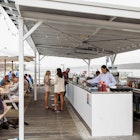
Aug 21, 2024 • 4 min read

Jul 31, 2024 • 7 min read

Jul 31, 2024 • 5 min read
Morning Rundown: How teen charged in school shooting obtained firearm, crucial moment for jobs report, and heartbreaking goodbyes in frontline Ukraine town
New Zealand nearly triples fees for international tourists
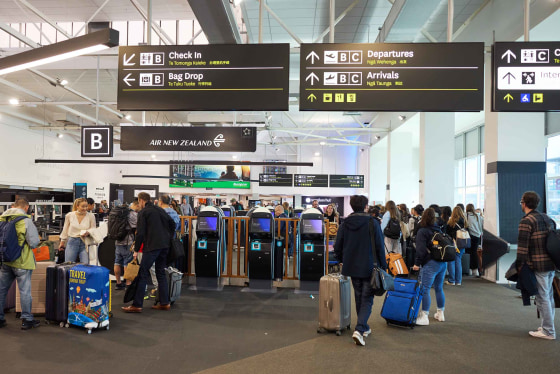
WELLINGTON, New Zealand — New Zealand will nearly triple entry fees for tourists, the government said Tuesday, spurring criticism from the key tourism sector that the higher levy will deter visitors.
The government said in a statement that it would increase the international visitor and conservation and tourism fees starting Oct. 1 to NZ$100 ($62.20) from NZ$35 to “ensure visitors contribute to public services and high-quality experiences while visiting New Zealand.”
Like many popular global tourism spots, New Zealand has struggled with the impact of tourists on the natural environment, with infrastructure stretched by the large numbers. The $35 fee was introduced in July 2019, but this was not sufficient to cover the costs associated with so many visitors.
The government said the fee was competitive and that it was confident New Zealand would continue to be seen as an attractive visitor destination.
However, the country’s Tourism Industry Association believes the higher fees will discourage visitors, especially as the sector, once New Zealand’s biggest export earner, is still struggling to recover from strict border closures implemented during the Covid-19 pandemic.
“New Zealand’s tourism recovery is falling behind the rest of the world, and this will further dent our global competitiveness,” said Rebecca Ingram, the association’s chief executive.
Data from Stats NZ released earlier Tuesday showed that travel export receipts for the year that ended June 30 were at NZ$14.96 billion, down 5% from before the pandemic. Visitor numbers, according to the bureau, are at roughly 80% of levels before the border closures.
The New Zealand government has also recently increased the costs of visitor visas and there is a proposal to increase charges on regional airports.
It is “a triple-whammy for our sector, which is trying to work hard for New Zealand’s economic recovery,” said Billie Moore, chief executive of NZ Airports.

IMAGES
COMMENTS
The New Zealand-Aotearoa Government Tourism Strategy sets out a more deliberate and active role for government in tourism. We want to make sure that the many benefits from tourism are realised, while managing the impacts. The Government works as a steward, looking across the system to make sure it is working effectively and as an actor through ...
This report captures findings from questions included in Views on Tourism© research conducted from April 2023 to March 20241. Tourism New Zealand is Angus & Associates' country-level partner for the research programme in New Zealand. The Views on Tourism questions are designed to measure resident opinion on the value of international and ...
35% growth in visitor arrivals in the last 5 years. 51% growth in spend in the last 5 years. 3.9 million annual international visitors. 60% tourism spending is by domestic visitors. 5.1 million annual visitors by 2025. $16.2 billion or 20% of exports. $15.9 billion direct, $11.1 billion indirect contribution to GDP.
The New Zealand-Aotearoa Government Tourism Strategy, which aims to deliver benefits to New Zealanders through productive, sustainable and inclusive tourism growth, has been launched today by Tourism Minister Kelvin Davis and Conservation Minister Eugenie Sage. The new Strategy sets out a more deliberate and active role for government in ...
Before the pandemic, tourism was New Zealand's largest export industry, employing 8.4 per cent of the country's workforce and contributing around 6 per cent of GDP either directly or ...
New Zealand will steeply increase an entry tax for foreign tourists in a move some fear could deter visitors. The cost of the International Visitor Conservation and Tourism Levy will near triple ...
It provides tourism policy advice to the Minister of Tourism and works with other Government departments on key tourism policy issues, tourism research and statistics. Tourism New Zealand Tourism New Zealand is the organisation responsible for marketing New Zealand to the world as a tourist destination. A Crown entity funded by the New Zealand ...
Just as the sector was starting to rebound, the economic fallout from Russia's aggression against Ukraine has dealt a fresh blow to recovery prospects. The 2022 edition of OECD Tourism Trends and Policies analyses tourism performance and policy trends to support recovery across 50 OECD countries and partner economies. It examines the key ...
Note: Tables 19-26 contain detailed tables for the year ended March 2022.. 2023 Key Provisional Estimates. Note: The 2023 annual estimates featured capture the impact of COVID-19 in New Zealand through to March 2023 and are expressed in nominal terms. Key provisional estimates for the year ended March 2023: total tourism expenditure was $37.7 billion, an increase of 39.6% ($10.7 billion) from ...
Welcome to New Zealand. Get official travel information, maps, itineraries, activities & accommodation to help you plan your next holiday to New Zealand.
Phone: +64 4 462 8000. Street address: Level 23Aon Centre1 Willis StreetWellington6011New Zealand. Postal address: PO Box 95Wellington6140New Zealand. Website More contact details. New Zealand Tourism Board. Manaakitanga Aotearoa.
Tourism last year contributed about 13.2 billion dollars ($8.2bn) to New Zealand's economy, accounting for 3.5 percent of gross domestic, making it one of the country's biggest export ...
The impact of COVID-19 on tourism is forecasted to be a loss of up to NZ$17.28bn compared to 2019 (TNZ, 2020). The impact on industry included Air New Zealand's profits falling from NZ$109m in 2019 to a loss of NZ$72m in 2020 (Zealand, 2021).
Before the pandemic, tourism was New Zealand's largest source of foreign exchange and accounted for about 5.5% of gross domestic product (GDP). The reviving sector is expected to have supported ...
Tourism Minister Matt Doocey said Tuesday the levy will increase to NZ$100 ($62) from NZ$35, effective Oct. 1. It comes on top of a NZ$130 hike in the cost of visas for those visitors that require ...
The key changes to the draft Strategy include: 21.1. Strengthening the way the Government will engage with Māori tourism enterprise, whanau, iwi, hapū and tangata whenua; 21.2. Tikanga values that underpin sustainable tourism growth for Aotearoa New Zealand; 21.3. Refined outcomes and sharper language; 21.4.
The New Zealand Tourism Sustainability Commitment aims to see every New Zealand tourism business committed to sustainability by 2025. Our vision is Leading the World in Sustainable Tourism - Toitū te taiao, toitū te tāpoi. E kōkiri ana e Aotearoa. To deliver on this, we must grow an industry which delivers high quality experiences for both ...
Why is New Zealand raising its tourism tax? Raising the tourism tax to NZ$100 is meant "to ensure visitors contribute to public services and high-quality experiences while visiting New Zealand," the country's minister for tourism and hospitality and minister for conservation said in a statement announcing the news Tuesday. "The Government is serious about enabling the tourism sector to grow ...
Overseas visitor arrivals to New Zealand increased 858.7 percent to 2,199,073. Tourism generated a direct contribution to GDP of $13.3 billion, or 3.7 percent of GDP, an increase of 30.9 percent ($3.1 billion) The indirect value added of industries supporting tourism generated an additional $8.8 billion, or 2.5 percent of GDP.
In 2020, six months into the pandemic, New Zealand put together a Tourism Futures Taskforce of government and industry leaders. It was tasked with identifying meaningful actions that could make for a better and more sustainable tourism future. The Taskforce produced an interim report (MBIE, 2021) with some interesting and challenging ideas.
Tourism New Zealand is the marketing agency responsible for promoting New Zealand as a tourism destination ... (previously the New Zealand Ministry of Tourism) is the government department tasked with tourism policy and research. In undertaking this promotion, it has a stated objective to contribute to New Zealand's well-being across four ...
NEW ZEALAND TOURISM STRATEGY 2015 3 BUILDING ON SUCCESS He mihi nui ki a koutou katoa The New Zealand Tourism Strategy 2015 sets out our vision for a successful, world-leading industry, and an ambitious path to achieve this. In the Strategy draft I put forward a challenge, and I was delighted that the response to this was clear and consistent.
2. It's OK to dress down. Casualness rules in New Zealand, even in urban areas. Depending on what region you're in, even a wedding might see some Kiwis in jeans, their cleanest "bush shirt" (a tough woolen shirt) and gumboots (rubber boots/ Wellington boots) or jandals (flip-flops). This is unremarkable.
Regulated parties. The primary purpose of the tourism-related legislation administered by MBIE is not to regulate parties - it is enabling legislation which establishes Tourism New Zealand as a key organisation in the tourism sector. Under the Immigration Act's provisions for the International Visitor Conservation and Tourism Levy ...
The tourism industry criticized plans to increase international visitor and conservation and tourism fees to NZ$100 ($62.20) from NZ$35 starting Oct. 1.
Aotearoa New Zealand's tourism industry has been greatly impacted by the COVID-19 pandemic. The government has provided broad-based and targeted support to the industry since the pandemic began. You can read about the support at the links below. Tourism Industry Transformation Plan; 2021 support - Tourism Communities: Support, Recovery and Re ...
FUTURE TRENDS FOR NEW ZEALAND'S TOURISM SECTOR. The 2018 Tourism Satellite Account tells us that since 2010, the value of New Zealand's tourism sector has grown from $25.6 billion to $39.1 billion per annum, with particularly high growth experienced between 2014 and 2018.